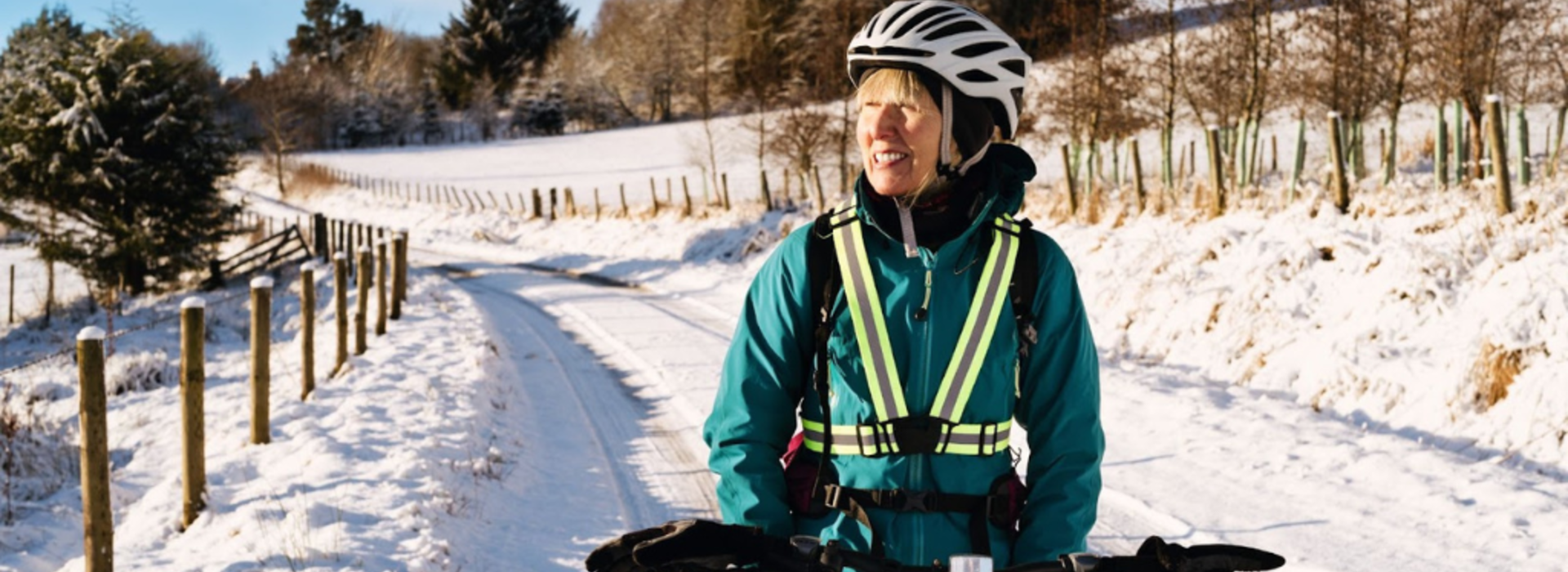
Talking winter activity for older adults with U of M
MINNEAPOLIS/ST. PAUL (01/25/2024) — As winter blankets us with snow and crisp air, it brings an array of opportunities for activities for outdoor enjoyment. While the colder months may tempt us to hibernate, older adults can find health benefits by embracing the season’s offerings.
Teresa McCarthy, MD, and Sharon Kimble, PT, DPT, with the University of Minnesota Medical School, talk about winter activity for older adults.
Q: What health benefits do older adults gain from staying active during the winter?
Dr. Kimble: Physical activity is important for everyone all year long. The benefits include maintaining or gaining strength for everyday activities that are personally important, decreasing fall risk, decreasing illness recovery time, increasing illness resistance, improving cognition, increasing heart health, and better sleep. Exercise is associated with decreased stroke risk, decreased incidence of type 2 diabetes, improved brain health, and appetite management.
Q: What unique barriers do older adults face in the winter and how can they be overcome?
Dr. McCarthy: Older Minnesotans who enjoy winter weather and have no significant health problems should continue their cold-weather activities. Dressing properly for the temperature and watching out for slippery surfaces are essential for all outdoor activities.
People with chronic health issues may need to adjust their activities due to limited exercise tolerance or high fall risk. Walking tolerable distances on a daily basis — preferably with a friend! — maintains strength and improves mood for many people. Having a place to walk inside on very snowy or cold days, such as the local mall or health club track, keeps this a viable option throughout winter.
People engaged in outdoor activities should be cautious of the hazards posed by icy surfaces. Fall and bone fracture risks increase with age, so common sense and caution are always warranted when outside. Having sidewalks cleared of ice and snow, wearing proper footwear with traction, and having hands free can help avoid injurious falls.
Q: What types of activities do you recommend for older adults during the winter to promote physical fitness?
Dr. Kimble: Physical fitness can encompass many types of activities, and there is a wide range of older adult skill sets and levels of fitness. Winter is not the time to get stir-crazy and start a new comprehensive outdoor fitness program. If you have the right equipment, keep biking or running, staying mindful of changing outdoor conditions. Keep doing what you love until it is too cold or slick. Maintaining a walking routine is a great way to keep up with cardiovascular strength and bone health. Taking a class such as dance, yoga, or tai chi to engage in multimodal exercise can improve balance, strength, and cognition. Using a treadmill, stairs in your home or apartment building, or walking/running indoors can be alternatives on the coldest days.
Q: How much physical activity would you recommend?
Dr. Kimble: The American College of Sports Medicine recommendations are considered the gold standard for exercise for healthy adults. There are two main types of exercise: endurance training and strength training. The current recommendation for endurance exercise is 150 minutes of moderate-intensity activity every week. This is 30 minutes five days per week that can be spread over increments as short as five minutes. Moderate-intensity exercise raises the heart rate and results in sweating — you should be able to talk but not sing. The strength training recommendation is to train all major muscle groups twice weekly. Strength training intensity should be enough that the resistance is challenging after 8-12 repetitions. People with chronic conditions, such as Parkinson’s, multiple sclerosis, diabetes, osteoporosis, or heart disease, should consider meeting with a physical therapist or exercise physiologist to design an individualized plan that can help navigate questions and concerns.
Q: How does your research at the University support your clinical work?
Dr. McCarthy: I provide care for older people with multiple medical conditions and age-associated problems. My research focuses on geriatric syndromes that contribute to functional and cognitive decline, such as falls, memory loss, and over-use of medications. The research informs new ways of identifying risk factors for frailty and intervening to maintain and improve health for older people.
Dr. Teresa McCarthy is an associate professor and faculty at the Center for Healthy Aging and Innovation at the U of M Medical School. She specializes in geriatric syndrome assessment and management, geriatric education, interprofessional team care, transitions management, long-term care medical direction, and comprehensive geriatric assessment.
Dr. Sharon Kimble is a physical therapist with a clinical interest in older adults, amputation, and stroke recovery. She is a clinician at M Health Fairview Inpatient Rehab Facility and an instructor in the Division of Physical Therapy. She is the director of the Physical Therapy Geriatric Residency.
-30-
About “Talking...with U of M”
“Talking...with U of M” is a resource whereby University of Minnesota faculty answer questions on current and other topics of general interest. Feel free to republish this content. If you would like to schedule an interview with the faculty member or have topics you’d like the University of Minnesota to explore for future “Talking...with U of M,” please contact University of Minnesota Public Relations at unews@umn.edu.
About the University of Minnesota Medical School
The University of Minnesota Medical School is at the forefront of learning and discovery, transforming medical care and educating the next generation of physicians. Our graduates and faculty produce high-impact biomedical research and advance the practice of medicine. Visit med.umn.edu to learn how the University of Minnesota is innovating all aspects of medicine.